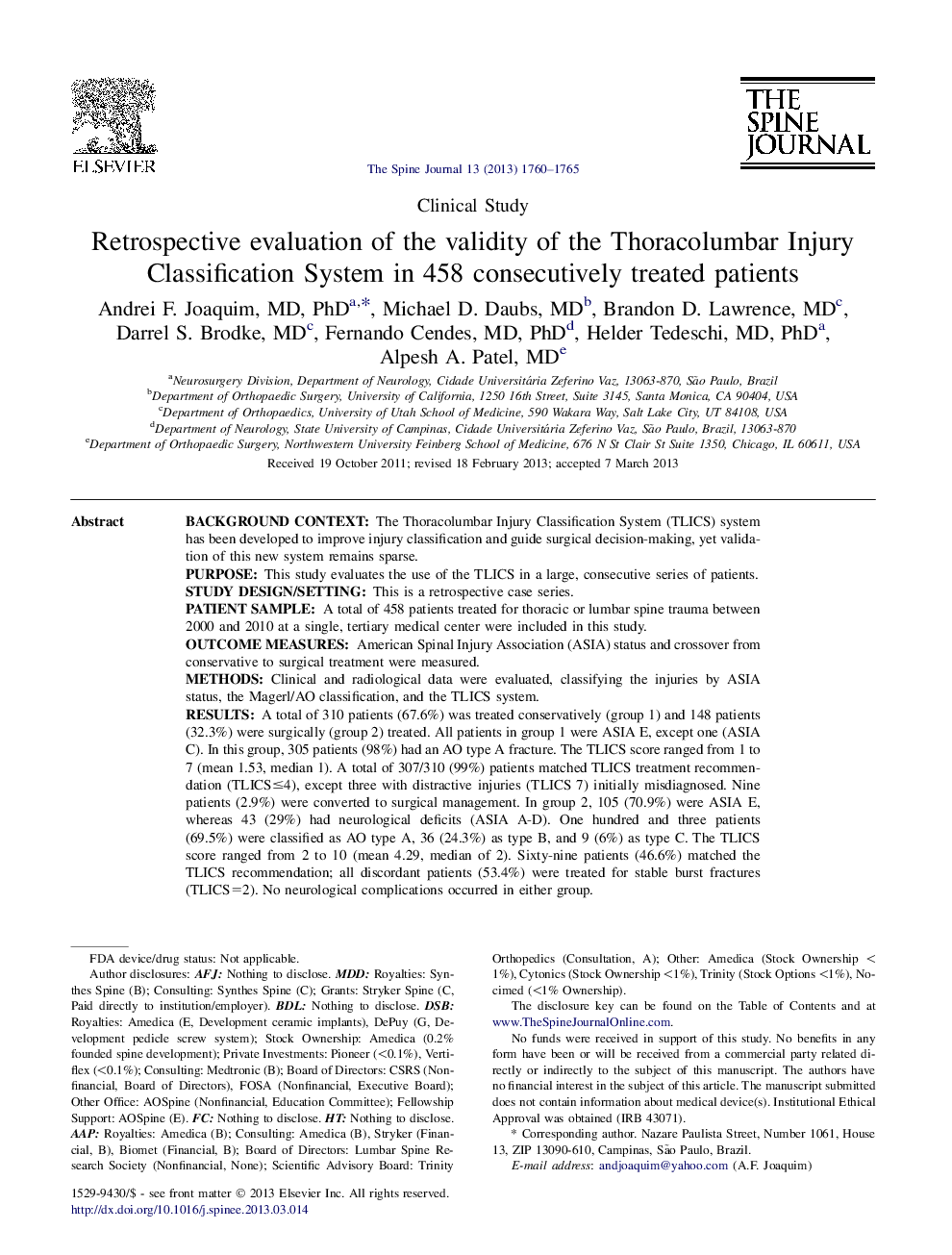| Article ID | Journal | Published Year | Pages | File Type |
|---|---|---|---|---|
| 4096399 | The Spine Journal | 2013 | 6 Pages |
Background contextThe Thoracolumbar Injury Classification System (TLICS) system has been developed to improve injury classification and guide surgical decision-making, yet validation of this new system remains sparse.PurposeThis study evaluates the use of the TLICS in a large, consecutive series of patients.Study design/settingThis is a retrospective case series.Patient sampleA total of 458 patients treated for thoracic or lumbar spine trauma between 2000 and 2010 at a single, tertiary medical center were included in this study.Outcome measuresAmerican Spinal Injury Association (ASIA) status and crossover from conservative to surgical treatment were measured.MethodsClinical and radiological data were evaluated, classifying the injuries by ASIA status, the Magerl/AO classification, and the TLICS system.ResultsA total of 310 patients (67.6%) was treated conservatively (group 1) and 148 patients (32.3%) were surgically (group 2) treated. All patients in group 1 were ASIA E, except one (ASIA C). In this group, 305 patients (98%) had an AO type A fracture. The TLICS score ranged from 1 to 7 (mean 1.53, median 1). A total of 307/310 (99%) patients matched TLICS treatment recommendation (TLICS≤4), except three with distractive injuries (TLICS 7) initially misdiagnosed. Nine patients (2.9%) were converted to surgical management. In group 2, 105 (70.9%) were ASIA E, whereas 43 (29%) had neurological deficits (ASIA A-D). One hundred and three patients (69.5%) were classified as AO type A, 36 (24.3%) as type B, and 9 (6%) as type C. The TLICS score ranged from 2 to 10 (mean 4.29, median of 2). Sixty-nine patients (46.6%) matched the TLICS recommendation; all discordant patients (53.4%) were treated for stable burst fractures (TLICS=2). No neurological complications occurred in either group.ConclusionsThe TLICS recommendation matched treatment in 307/310 patients (99%) in the conservative group. However, in the surgical group, 53.4% of patients did not match TLICS recommendations, all were burst fractures without neurological injury (TLICS=2). The TLICS system can be used to effectively classify thoracolumbar injuries and guide conservative treatment. Inconsistencies, however, remain in the treatment thoracolumbar burst fractures.
